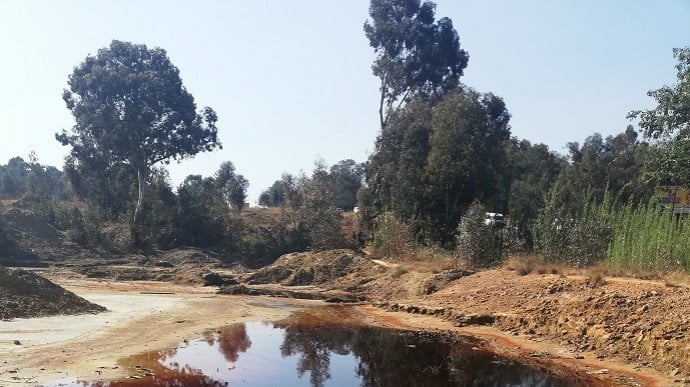University of Pretoria Scientist Urges Immediate Clean-Up of Toxic Krugersdorp Mine Dumps
Young children in Krugersdorp are breathing in uranium, arsenic and mercury fumes wafting over from abandoned legacy mines, while pollutants are seeping into the groundwater and nearby dams and lakes, cautions Dr Alseno Kagiso Mosai, a water remediation expert at the University of Pretoria’s (UP) Department of Chemistry.
“If this is not treated now, the effects of legacy mines will continue and the impact will be much more severe,” he says. “This means that the government will need large amounts of money to clean the water in order to bring it up to the standard needed for households.”
Dr Mosai says that while the mining companies responsible for the pollution are often nowhere to be seen, it is ultimately up to the government to fund acid mine drainage (AMD) clean-ups in order to protect the right of citizens to a healthy environment and clean water.
“Many AMD clean-up technologies do exist,” he adds. “Some are more or less expensive, while others are more or less effective, depending on the local context.”
To help authorities take urgent action in Krugersdorp and other parts of South Africa, Dr Mosai and fellow experts Dr Gebhu Ndlovu, of national mineral research organisation Mintek, and Professor Hlanganani Tutu, of the University of the Witwatersrand, authored a journal article in which they reviewed existing technologies, and recommended a combined approach that is both affordable and effective.
Communities at risk
“Krugersdorp is full of legacy mines, and most residents who live in the vicinity of the mine dumps have had serious health issues, such as asthma,” Dr Mosai says, noting that this is backed up by several research studies.
“I’ve been there and I’ve seen it,” he adds. “It is not only kids – there are dams in this area that are used by older people for recreational activities like swimming, as well as religious activities like baptisms. We talk to them about the dangers, but they’re just doing these things innocently; it’s really sad for me and my colleagues to see.”
Dr Mosai explains that because the toxins can spread in both the air and in the water, even people who live some distance away from mine dumps may be affected.
Call to action
The scientists are calling on authorities to make use of two technologies developed by South African researchers at Mintek: one precipitates unwanted toxins and the other uses microorganisms sourced from plant waste to “eat” heavy metal pollutants. The technologies are trademarked as SAVMINTM and CloSURETM respectively.
Dr Mosai explains that in the case of using microorganisms, there is the double benefit of recycling plant waste while saving costs on water treatment chemicals. Both technologies would also enable precious metals like cobalt, copper and nickel to be recovered for commercial use.
“It is therefore in the interest of municipal decision-makers, industry and other researchers to take note of the review article, so that South Africa doesn’t keep reinventing the wheel when it comes to researching new AMD clean-up technologies, and so that the benefits of mine remediation for governance, business and the safety of our children become clear,” he says.
On a positive note, Dr Mosai adds that UP experts like himself have been supporting remediation efforts by the national Department of Water and Sanitation, which has detected toxic mine elements in several areas.
“If we don’t act now though, this issue is not going to go away,” he says.

